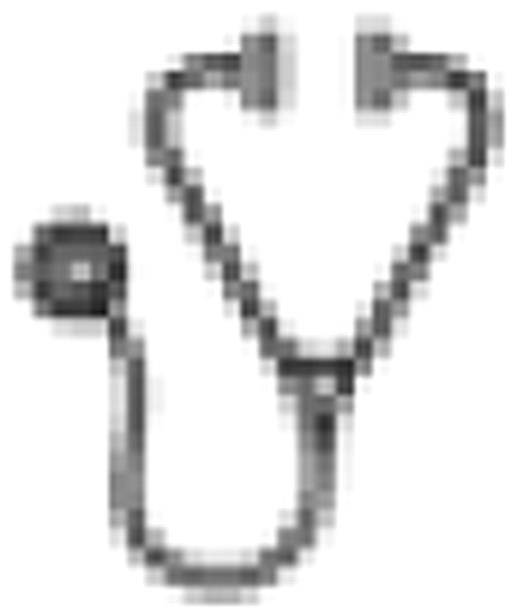Abstract
Elevation of tricuspid regurgitant jet velocity (TRJV) predicts high systolic pulmonary artery pressure and early mortality in adults with sickle cell anemia (SCA). To date, few studies have reported the concomitant analysis of lung alterations and high TRJV in SCA-children.
To evaluate the relationship between lung function, TRJV and hematologic parameters in SCA-children.
SCA-children of the Creteil-CHIC cohort were assessed at steady state on the same day by cardiac echocardiography, pulmonary function tests (PFT), clinical and biological parameters. All data were recorded in the CHIC database. Forced vital capacity (FVC), forced expiratory volume in 1 sec (FEV1), total lung capacity (TLC) and diffusing capacity for carbon monoxide (DLCO) were measured with the single-breath technique. DLCO was adjusted to hemoglobin and to the alveolar volume (KCOc). Univariate and multivariate linear regression analyses were performed to evaluate factors correlating with TRJV and KCOc and logistic regression was applied to evaluate the risk factors associated with elevated TRJV (≥ 2.5 m/s).
A total of 228 check-ups with cardiac and lung assessment, performed in 163 SCA-patients (160 SS, 3 SB0) was analyzed. Check-ups were performed at the median age of 13.2 years (range: 5.7–19.9). Among the 228 check-ups, 151 were performed after intensification (59 on hydroxyurea, 57 on transfusion program and 38 after hematopoietic stem cell transplantation (HSCT). TRJV (median value: 2.2 m/s, range 1.4–3.1) was significantly positively correlated with age (r=0.164, p=0.013), was not correlated with TLC but was significantly and negatively correlated with FVC before b2 (r=−0.145, p=0.03) and after b2 (r=−0.184, p=0.008), FEV1 before b2 (r=−0.213, p=0.001) and after b2 (r=−0.178, p=0.012), FEV1/FVC before b2 (r=23?0.165, p=0.013) and positively correlated with KCOc (r=0.379, p<0.001). Multiple linear regression analysis including age and all significant PFT data retained only KCOc as a significantly correlated factor (standardized beta: 0.390, p<0.001). Among biological parameters, TRJV was not correlated to HbF %, platelets, LDH and proBNP but significantly correlated to hemoglobin, hematocrite, reticulocytes, WBC, neutrophils, HbS %, ASAT and bilirubin. Multiple linear regression including all these biological significant biological parameters retained only reticulocytes as significantly associated with TRJV (standardized beta: 0.361, p=0.008). The addition of KCOc to the model retained reticulocytes (standardized beta: 0.198, p=0.010) and KCOc (standardized beta: 0.327, p<0.001) as significantly correlated. Among the biological parameters significantly correlated with KCOc (hemoglobin, reticulocytes, LDH, WBC, platelets, HbS%, ASAT, bilirubin), multiple linear regression analysis retained HbS% (standardized beta: 0.190, p=0.027) and reticulocytes (standardized beta: 0.212, p=0.014) as significantly and positively independent correlated factors. Elevated TRJV (≥ 2.5 m/s) was observed in 39 patients. Reticulocytes per 1×109/L increase (OR: 1.005; 95% CI:1.001–1.009; p=0.007) and KCOc per 1% increase (OR: 1.022; 95% CI:1.007–1.037; p=0.004) were retained as independent and significant factors associated to the risk of TRJV ≥ 2.5 m/s by multivariate logistic regression. When comparing the check-ups in patients without intensification, only those performed after HSCT showed significantly lower KCOc (p<0.001), reticulocytes (p<0.001) and TRJV (p=0.035)
In this study, we confirm that SCA-children have an elevated gas transfer per unit lung volume (KCOc) correlated to hemolysis and HbS%. We show for the first time that an increase in KCOc significantly raises the risk for TRJV ≥ 2.5 m/s, even after adjustment for reticulocytes. Only HSCT, which resulted in significantly lower reticulocytes and KCOc, is significantly associated with lower TRJV. These data are encouraging and suggest that HSCT could be recommended to patients with elevated TRJV
| . | No intensification . | Hydroxyurea . | Transfusion program . | HSCT . | HSCT vs no intensification . |
|---|---|---|---|---|---|
| n | 77 | 56 | 57 | 38 | |
| mean (SD) | p (t-test) | ||||
| TRJV | 2.17 (0.28) | 2.23 (0.25) | 2.19 (0.31) | 2.05 (0.26) | 0.035 |
| Reticux109/L | 273.5 (95.4) | 184.9 (84.5) | 249.7 (114.0) | 59.7 (38.6) | <0.001 |
| KCOc | 118.3 (34.4) | 120.2 (31.6) | 115.2 (24.3) | 91.6 (20.6) | <0.001 |
| . | No intensification . | Hydroxyurea . | Transfusion program . | HSCT . | HSCT vs no intensification . |
|---|---|---|---|---|---|
| n | 77 | 56 | 57 | 38 | |
| mean (SD) | p (t-test) | ||||
| TRJV | 2.17 (0.28) | 2.23 (0.25) | 2.19 (0.31) | 2.05 (0.26) | 0.035 |
| Reticux109/L | 273.5 (95.4) | 184.9 (84.5) | 249.7 (114.0) | 59.7 (38.6) | <0.001 |
| KCOc | 118.3 (34.4) | 120.2 (31.6) | 115.2 (24.3) | 91.6 (20.6) | <0.001 |
No relevant conflicts of interest to declare.

This icon denotes a clinically relevant abstract
Author notes
Asterisk with author names denotes non-ASH members.

This feature is available to Subscribers Only
Sign In or Create an Account Close Modal